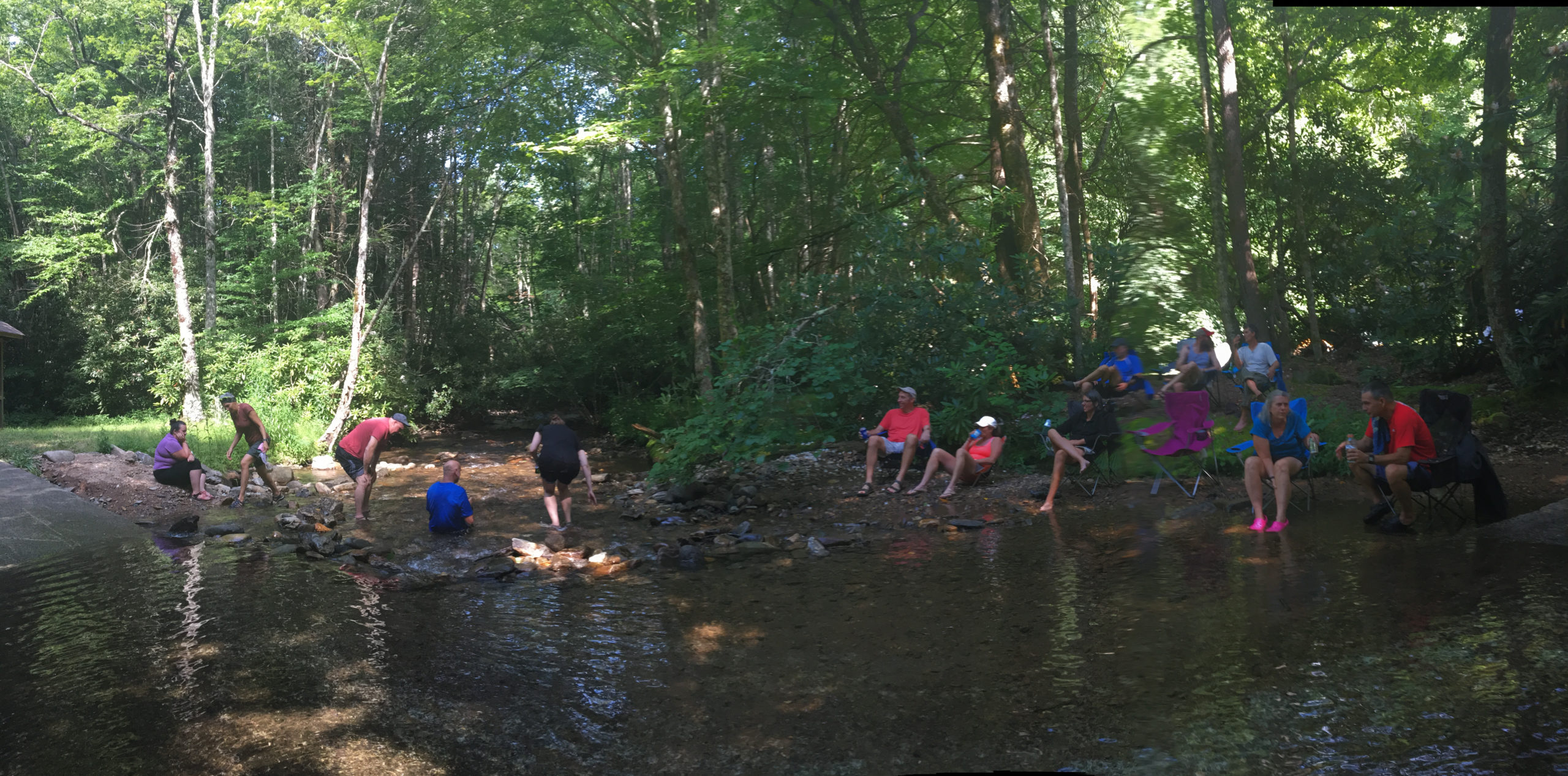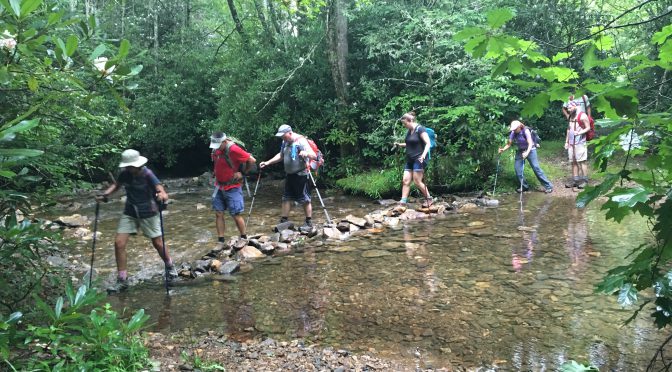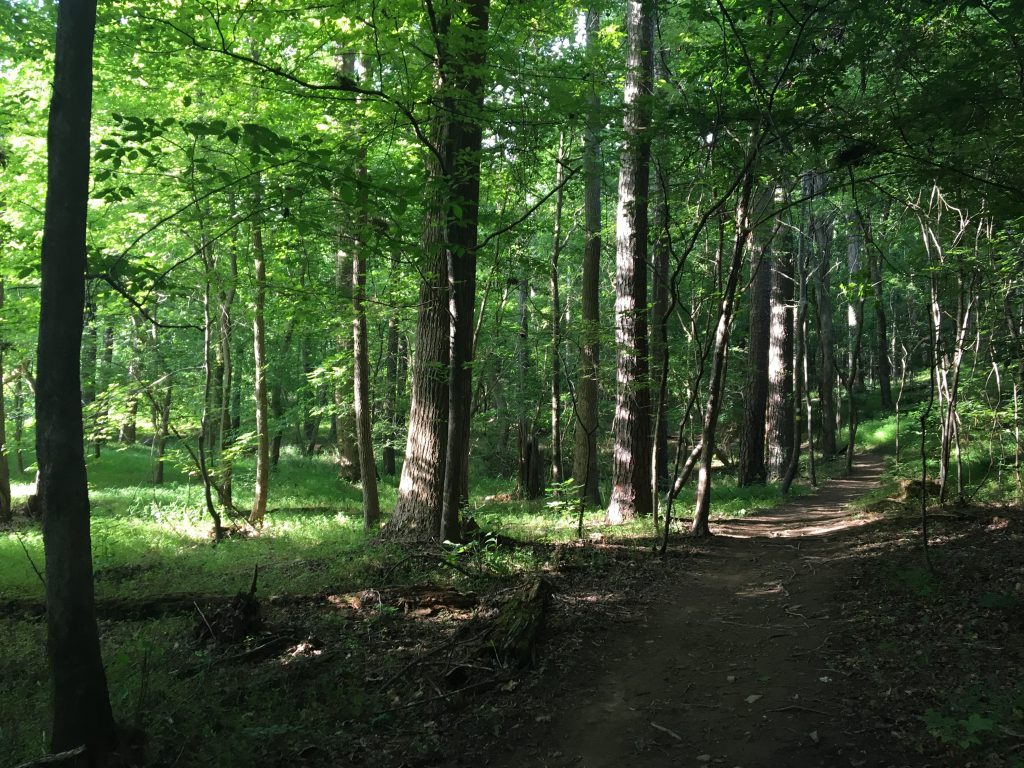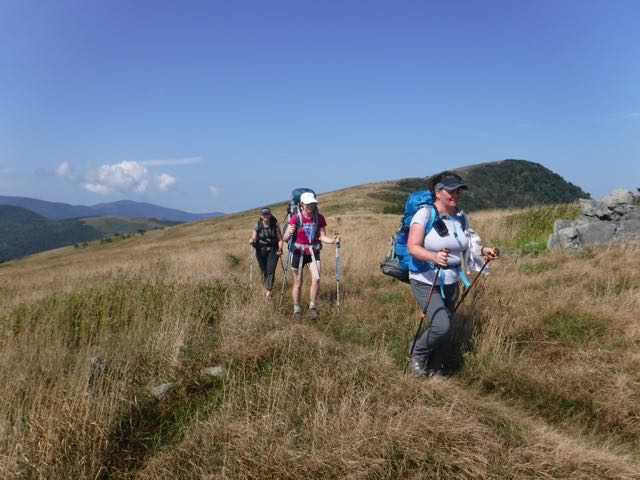As summer and its 90-degree temperatures near, hiking midday can be one sweaty undertaking. That leaves the evenings and early mornings, when temperatures in the 70s seem downright fall-like. Today, we revisit a piece from May 6, 2011, that expounds upon the delights — and challenges — of the early morning hike.
I bolted upright, wide awake, at 4:45, 15 minutes before the alarm was scheduled to do its ugly business. In 10 minutes I was dressed, had my daypack packed, poured a mug of coffee and was ready to go. I wasn’t my usual morning self.
But then, on this morning I wasn’t going about my usual morning routine.
For the past several years, my friend Alan and I have attempted to beat the winter blues by taking night hikes. Starting in October, as the sun starts to play hard-to-get and temperatures dip into the fleece zone, we head out at dusk for three hours or so of headlamp-guided night hiking. It’s not a substitute for day hiking, when you can see things. Rather, with both of us entrenched in our 50s it’s a way to keep our legs and hearts in shape for those long hikes we hope to keep taking years from now. And as challenges go, we find we hike faster without the distraction of nature, an acceleration aided by the cold, which inspires a peppy, heat-producing pace.
Usually, our night hiking season runs through March. Cold snaps willing, we can sometimes push it into April. May, though, is a stretch, and when I suggested to Alan last week that we might take advantage of a coming cold front he asked just how cold it was supposed to get. I consulted the iPhone weather app.
“Overnight low of 45,” I said.
“But in the evening it’ll probably still be in the 60s,” he replied. “In the morning, on the other hand … .”
Our turnaround point presented a dilemma: Do we head back and go to work or do we join the great blue herons for breakfast?
Morning hikes offer a chance to settle your day before it gets started. A brisk morning walk around the neighborhood or 30 minutes on the treadmill certainly achieve the goal of waking you up and jump-starting your system. But throw in the predawn sun casting its pink glow, mist hovering above a pond, the first rays of sun knifing sideways through a hardwood forest and the sounds of a woodland slowly coming to life, and you’ve pretty much assured yourself that while today can’t get any better you’re not of a frame of mind to let it get worse.
Three challenges associated with the morning hike:
Challenge: A lot of our public forests aren’t officially open before dawn. North Carolina’s state parks, for instance, don’t officially open until 8 a.m. That’s the bewitching hour for many parks and forested areas run by municipalities as well (others observe the less-formal dawn-to-dusk schedule). Notable exceptions are lands managed by the U.S. Forest Service, of which there are more than 18 million acres, and the
N.C. Wildlife Resources Commission read more




